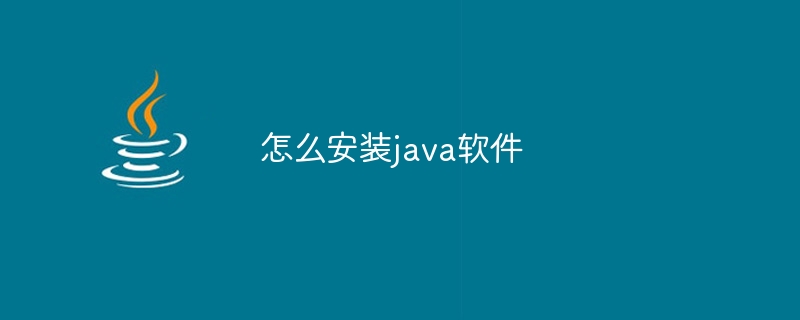
介绍
这是软件工程师访谈系列的第三篇文章。我带来了几年前做过的挑战,并且实际上得到了这个职位 - 涉及其他技术面试,例如过去的经验筛选。
如果您错过了本系列之前的帖子,可以在这里找到它们。
挑战
这个挑战也是一项带回家的编码任务,我必须开发一个 cli 程序来查询 oeis(整数序列在线百科全书)并返回结果总数以及第一个结果的名称查询返回五个序列。
值得庆幸的是,oeis 查询系统包含 json 输出格式,因此您可以通过调用 url 并将序列作为查询字符串传递来获取结果。
输入和输出示例:
oeis 1 1 2 3 5 7
found 1096 results. showing first five: 1. the prime numbers. 2. a(n) is the number of partitions of n (the partition numbers). 3. prime numbers at the beginning of the 20th century (today 1 is no longer regarded as a prime). 4. palindromic primes: prime numbers whose decimal expansion is a palindrome. 5. a(n) = floor(3^n / 2^n).
注意:此结果已过时!
解决挑战
解决这一挑战的计划如下:
- 从将作为 cli 入口点的 python 文件开始
- 它应该接收一个以空格分隔的数字列表作为参数
- 创建一个客户端文件,负责从 oeis 查询系统获取数据
- 一个格式化程序,负责返回为控制台格式化的输出
由于这是一个编码挑战,我将使用 poetry 来帮助我创建项目的结构,并方便任何人运行它。您可以在他们的网站上查看如何安装和使用 poetry。
我将首先使用以下内容创建包:
poetry new oeis
这将创建一个名为 oeis 的文件夹,其中包含 poetry 的配置文件、一个测试文件夹和一个也称为 oeis 的文件夹,该文件夹将成为我们项目的根目录。
我还将添加一个名为 click 的可选包,它有助于构建 cli 工具。这不是必需的,可以用 python 中的其他本机工具替换,尽管不太优雅。
在项目文件夹中,运行:
poetry add click
这会将 click 添加为我们项目的依赖项。
现在我们可以移动到入口点文件。如果你打开文件夹 oeis/oeis,你会看到已经有一个 __init__.py 文件。让我们更新它以导入 click,以及使用以下命令调用的主函数:
# oeis/oeis/__init__.py
import click
@click.command()
def oeis():
pass
if __name__ == "__main__":
oeis()
这是我们 cli 的起点。看到@click.command了吗?这是来自 click 的包装器,它将帮助我们将 oeis 定义为命令。
现在,还记得我们需要接收以空格分隔的数字序列吗?我们需要将其添加为参数。 click 有一个选项:
# oeis/oeis/__init__.py
import click
@click.command()
@click.argument("sequence", nargs=-1)
def oeis(sequence: tuple[str]):
print(sequence)
if __name__ == "__main__":
oeis()
这将添加一个名为序列的参数,并且 nargs=-1 选项告诉单击它将用空格分隔。我添加了一个打印,以便我们可以测试参数是否正确传递。
为了告诉 poetry 我们有一个命令,我们需要打开 pyproject.toml 并添加以下行:
# oeis/pyproject.toml [tool.poetry.scripts] oeis = "oeis:oeis"
这是添加一个名为 oeis 的脚本,该脚本调用 oeis 模块上的 oeis 函数。现在,我们运行:
poetry install
这将让我们调用脚本。我们来尝试一下:
❯ poetry run oeis 1 2 3 4 5
('1', '2', '3', '4', '5')
完美,我们已经按照我们的预期解析了命令和参数!让我们继续讨论客户端。在oeis/oeis文件夹下,创建一个名为clients的文件夹、一个名为__init__.py的文件和一个名为oeis_client.py的文件。
如果我们期望在这个项目中拥有其他客户端,我们可以开发一个基本客户端类,但由于我们只有这一个,所以这可能被认为是过度设计。在 oeis 客户端类中,我们应该有一个基本 url,这是没有路径的 url,我们将使用它来查询它:
# oeis/oeis/clients/oeis_client.py
import requests
from urllib.parse import urlencode
class oeisclient:
def __init__(self) -> none:
self.base_url = "https://oeis.org/"
def query_results(self, sequence: tuple[str]) -> list:
url_params = self.build_url_params(sequence)
full_url = self.base_url + "search?" + url_params
response = requests.get(full_url)
response.raise_for_status()
return response.json()
def build_url_params(self, sequence: tuple[str]) -> str:
sequence_str = ",".join(sequence)
params = {"q": sequence_str, "fmt": "json"}
return urlencode(params)
如您所见,我们正在导入 requests 包。我们需要将它添加到 poetry 中才能使用它:
poetry add requests
现在,客户端有一个不会改变的基本 url。让我们深入研究其他方法:
-
构建网址参数
- 接收从 cli 作为参数传递的序列,并将其转换为以逗号分隔的数字字符串
- 使用参数构建一个字典,q 是我们将运行的查询,fmt 是预期的输出格式
- 最后,我们返回参数的 url 编码版本,这是确保我们的字符串与 url 兼容的好方法
-
查询结果
- 接收从 cli 作为参数传递的序列,通过 build_url_params 方法构建 url 编码的参数
- 构建将用于查询数据的完整 url
- 继续向构建的 url 发出请求,并引发我们未预料到的任何 http 状态
- 返回 json 数据
我们还需要更新我们的主文件,以调用此方法:
# oeis/oeis/__init__.py
import click
from oeis.clients.oeis_client import oeisclient
oeis_client = oeisclient()
@click.command()
@click.argument("sequence", nargs=-1)
def oeis(sequence: tuple[str]):
data = oeis_client.query_results(sequence)
print(data)
if __name__ == "__main__":
oeis()
这里我们现在在方法外部构建一个客户端实例,因此它不会在每次调用命令时都创建一个实例,而是在命令内部调用它。
运行此命令会产生非常非常长的响应,因为 oeis 有数千个条目。由于我们只需要知道总大小和前五个条目,因此我们可以执行以下操作:
# oeis/oeis/__init__.py
import click
from oeis.clients.oeis_client import oeisclient
oeis_client = oeisclient()
@click.command()
@click.argument("sequence", nargs=-1)
def oeis(sequence: tuple[str]):
data = oeis_client.query_results(sequence)
size = len(data)
top_five = data[:5]
print(size)
print(top_five)
if __name__ == "__main__":
oeis()
运行这个已经比以前好得多了。我们现在打印总大小以及前五个(如果存在)条目。
但我们也不需要所有这些。让我们构建一个格式化程序来正确格式化我们的输出。创建一个名为 formatters 的文件夹,其中包含 __init__.py 文件和 oeis_formatter.py 文件。
# oeis/oeis/formatters/oeis_formatter.py
def format_output(query_result: list) -> str:
size = len(query_result)
top_five = query_result[:5]
top_five_list = [f"{i+1}. {entry["name"]}" for i, entry in enumerate(top_five)]
top_five_str = "
".join(top_five_list)
first_line = f"found {size} results. showing the first {len(top_five)}:
"
return first_line + top_five_str
该文件基本上将前五个结果格式化为我们想要的输出。让我们在主文件中使用它:
# oeis/oeis/__init__.py
import click
from oeis.clients.oeis_client import oeisclient
from oeis.formatters import oeis_formatter
oeis_client = oeisclient()
@click.command()
@click.argument("sequence", nargs=-1)
def oeis(sequence: tuple[str]):
data = oeis_client.query_results(sequence)
output = oeis_formatter.format_output(data)
print(output)
if __name__ == "__main__":
oeis()
如果您运行此代码,您现在将得到:
found 10 results. showing the first 5: 1. a(n) is the number of partitions of n (the partition numbers). 2. a(n) = floor(3^n / 2^n). 3. partition triangle a008284 read from right to left. 4. number of n-stacks with strictly receding walls, or the number of type a partitions of n in the sense of auluck (1951). 5. number of partitions of n into prime power parts (1 included); number of nonisomorphic abelian subgroups of symmetric group s_n.
它现在以我们期望的格式返回,但请注意它说找到了 10 个结果。这是错误的,如果您在 oeis 网站上搜索,您会看到更多结果。不幸的是,oeis api 进行了更新,结果不再返回包含结果数量的计数。不过,该计数仍然显示在文本格式的输出中。我们可以用它来知道有多少个结果。
为此,我们可以更改 url 以使用 fmt=text 和正则表达式来查找我们想要的值。让我们更新客户端代码以获取文本数据,并更新格式化程序以使用此数据,以便我们可以输出它。
# oeis/oeis/clients/oeis_client.py
import re
import requests
from urllib.parse import urlencode
class oeisclient:
def __init__(self) -> none:
self.base_url = "https://oeis.org/"
self.count_regex = re.compile(r"showing .* of (d*)")
def query_results(self, sequence: tuple[str]) -> list:
url_params = self.build_url_params(sequence, fmt="json")
full_url = self.base_url + "search?" + url_params
response = requests.get(full_url)
response.raise_for_status()
return response.json()
def get_count(self, sequence: tuple[str]) -> str:
url_params = self.build_url_params(sequence, fmt="text")
full_url = self.base_url + "search?" + url_params
response = requests.get(full_url)
response.raise_for_status()
return self.get_response_count(response.text)
def build_url_params(self, sequence: tuple[str], fmt: str) -> str:
sequence_str = ",".join(sequence)
params = {"q": sequence_str, "fmt": fmt}
return urlencode(params)
def get_response_count(self, response_text: str) -> str:
match = self.count_regex.search(response_text)
if not match:
raise exception("count not found!")
return match.group(1)
如您所见,我们添加了两个新方法:
-
获取计数
- 将为文本 api 构建参数,并将其传递给使用正则表达式查找我们正在搜索的数字的方法
-
获取响应计数
- 将使用类 init 中内置的正则表达式来执行搜索并获取第一组
# oeis/oeis/formatters/oeis_formatter.py
def format_output(query_result: list, count: str) -> str:
top_five = query_result[:5]
top_five_list = [f"{i+1}. {entry["name"]}" for i, entry in enumerate(top_five)]
top_five_str = "
".join(top_five_list)
first_line = f"found {count} results. showing the first {len(top_five)}:
"
return first_line + top_five_str
在这个文件中,我们只为方法添加了一个新的参数,并用它代替了查询结果的长度。
# oeis/oeis/__init__.py
import click
from oeis.clients.oeis_client import oeisclient
from oeis.formatters import oeis_formatter
oeis_client = oeisclient()
@click.command()
@click.argument("sequence", nargs=-1)
def oeis(sequence: tuple[str]):
data = oeis_client.query_results(sequence)
count = oeis_client.get_count(sequence)
output = oeis_formatter.format_output(data, count)
print(output)
if __name__ == "__main__":
oeis()
这里我们只是在客户端调用新方法,并将信息传递给格式化程序。再次运行它会产生我们期望的输出:
❯ poetry run oeis 1 2 3 4 5 Found 7821 results. Showing the first 5: 1. The positive integers. Also called the natural numbers, the whole numbers or the counting numbers, but these terms are ambiguous. 2. Digital sum (i.e., sum of digits) of n; also called digsum(n). 3. Powers of primes. Alternatively, 1 and the prime powers (p^k, p prime, k >= 1). 4. The nonnegative integers. 5. Palindromes in base 10.
代码已经基本准备好了。但对于真正的挑战,请记住尽可能使用 git,进行小型提交,当然,添加单元测试、代码格式化库、类型检查器以及您认为需要的任何其他内容。
祝你好运!
以上就是软件工程师访谈 - #EIS CLI的详细内容,更多请关注php中文网其它相关文章!





